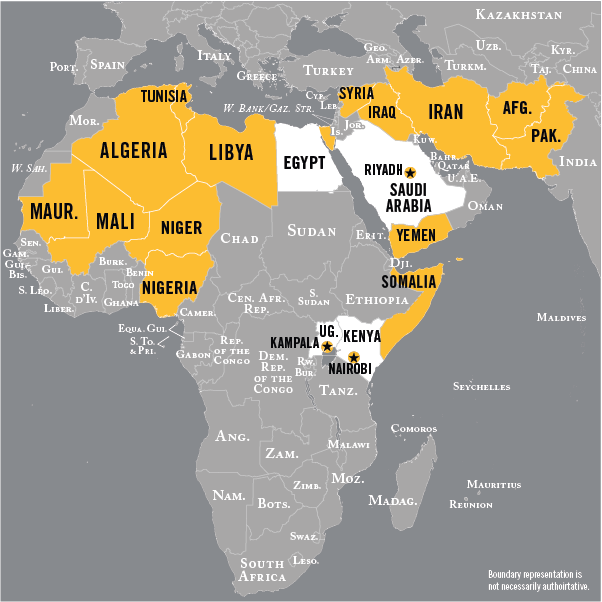TERRORIST GROUPS

BACKGROUND
Usama Bin Ladin formed al-Qa‘ida in 1988 with Arabs who fought in Afghanistan against the Soviet Union, and declared its goal as the establishment of a pan-Islamic caliphate throughout the Muslim world. Toward this end, al-Qa‘ida seeks to unite Muslims to fight the West, especially the United States, as a means of overthrowing Muslim regimes al-Qa‘ida deems “apostate,” expelling Western influence from Muslim countries, and defeating Israel. Al-Qa‘ida issued a statement in February 1998 under the banner of “the World Islamic Front for Jihad Against the Jews and Crusaders” saying it was the duty of all Muslims to kill US citizens—civilian and military—and their allies everywhere. The group merged with the Egyptian Islamic Jihad (al-Jihad) in June 2001.

On 11 September 2001, 19 al-Qa‘ida suicide attackers hijacked and crashed four US commercial jets—two into the World Trade Center in New York City, one into the Pentagon near Washington, D.C., and a fourth into a field in Shanksville, Pennsylvania—leaving nearly 3,000 people dead. Al-Qa‘ida also directed the 12 October 2000 attack on the USS Cole in the port of Aden, Yemen, which killed 17 US sailors and injured another 39, and conducted the bombings in August 1998 of the US embassies in Nairobi, Kenya, and Dar es Salaam, Tanzania, killing 224 people and injuring more than 5,000. Since 2002, al-Qa‘ida and affiliated groups have conducted attacks worldwide, including in Europe, North Africa, South Asia, Southeast Asia, and the Middle East.
In 2005, Ayman al-Zawahiri, then Bin Ladin’s deputy, publicly claimed al-Qa‘ida’s involvement in the 7 July 2005 bus bombings in the United Kingdom. In 2006, British security services foiled an al-Qa‘ida plot to detonate explosives on up to 10 transatlantic flights originating from London’s Heathrow airport. During that time, the numbers of al-Qa‘ida-affiliated groups increased. Following Bin Ladin’s death in 2011, al-Qa‘ida leaders moved quickly to name al-Zawahiri as his successor.
While al-Zawahiri leads a small but influential cadre of senior leaders widely called al-Qa‘ida Core, the group’s cohesiveness the past three years has diminished because of leadership losses from counterterrorism pressure in Afghanistan and Pakistan and the rise of other organizations such as the Islamic State of Iraq and the Levant (ISIL) that serve as an alternative for some disaffected extremists. The 2015 deaths of Nasir al-Wahishi and Abu Khalil al-Sudani, two of al-Qa‘ida’s most experienced top leaders, has hindered the organization’s core functions.
Nonetheless, al-Qa‘ida and its affiliates in South Asia, Africa, and the Middle East remain a resilient organization committed to conducting attacks in the United States and against American interests abroad. The group has advanced a number of unsuccessful plots in the past several years, including against the United States and Europe. This highlights al-Qa‘ida’s ability to continue some attack preparations while under sustained counterterrorism pressure and suggests it may be plotting additional attacks against the United States at home or overseas.
Looking ahead to 2016, al-Qa‘ida could seek to reconstitute its remnants in Afghanistan and place greater emphasis on smaller attacks against soft targets. Al-Qa‘ida continues to aspire to conduct large-scale attacks, however, and its historical ties to Afghanistan make the country an attractive operating area, especially if the group can leverage its longstanding relationships with Afghan insurgents who supported it in the years preceding 9/11.



